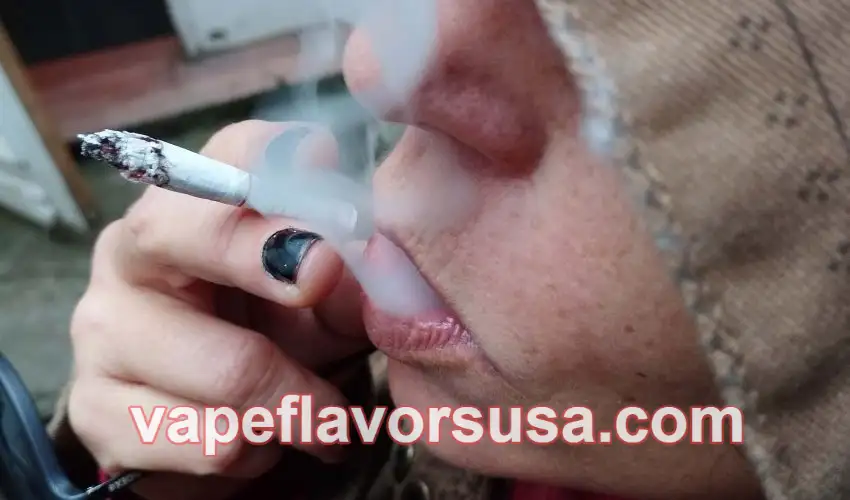Chile’s latest crack-down on tobacco products, especially vapes, marks a significant shift in the country’s approach to public health. On January 4th, 2024, the country’s Official Gazette published the revised Tobacco Law (Law No. 19419), which was updated under Law No. 21642. The new law takes aim at regulating all vaping products, regardless of whether or not they contain nicotine, and takes a more aggressive stance on the packaging, marketing, and sale of such products. This move is in line with global trends to better control e-cigarette use, especially among young people, and to limit its potential harms.

Let’s break it down: what does this new law mean for vapes, and why should we care?
What’s the Big Deal About Vaping?
Vaping, which involves inhaling vapor produced by heating a liquid (often containing nicotine), has become one of the hottest topics in public health discussions over the past decade. Whether it’s the rising popularity of flavored vapes among teens or the concerns about the long-term health risks, this is one industry that’s been drawing major attention from health officials, lawmakers, and parents alike.

Chile’s new regulations define two types of vape devices:
-
Electronic Nicotine Delivery Systems (ENDS), or more commonly known as vapes with nicotine. These devices heat up a liquid that typically contains nicotine (sometimes mixed with flavorings) and deliver it to the user in the form of vapor.
-
Electronic Non-Nicotine Systems (ENNDS), or vapes without nicotine. These devices still use the same method of heating a liquid (often with flavors) but do not contain nicotine. These are popular among users who enjoy the act of vaping but don’t necessarily want the addictive substance.
In Chile, all vape products—whether they contain nicotine or not—will now be classified under the same category as traditional tobacco products, meaning stricter regulations and oversight.
The Nitty-Gritty: Key Features of the Revised Law

1. Nicotine Limits: How Much is Too Much?
Under the new law, there is a strict cap on how much nicotine can be included in vape liquids. The maximum allowable nicotine concentration for nicotine-containing e-liquids is set at 45mg/mL. This is in line with global efforts to curb excessive nicotine use, which can lead to addiction and other health issues.
The law clearly states that any vape liquids that exceed this limit will not be allowed for sale in Chile. This move helps to ensure that consumers aren’t unknowingly consuming products with higher-than-recommended nicotine levels, which can be especially harmful to teens and non-smokers.
2. Safety Standards: Protecting the Kids
As if nicotine limits weren’t enough, the new law also places a significant focus on childproof packaging. All vape liquids, whether nicotine-free or nicotine-infused, must come in containers that cannot be opened or tampered with by children. This is a crucial step in reducing the number of accidental exposures, as kids are naturally curious and sometimes don’t understand the risks of handling such products.
3. Labeling and Warnings: Let’s Talk Transparency
When it comes to labeling and warnings, Chile is not messing around. If you’ve ever seen a pack of cigarettes, you know they come with some pretty graphic health warnings, and it turns out, vapes will be no different. The law requires that all vape products must display clear health warnings on the packaging in Spanish (since Chile is a Spanish-speaking country).
Here’s where it gets specific:
-
For vapes with nicotine and their accessories, health warnings must cover 20% of the front face of the packaging. These warnings will read:
- “Los sistemas electrónicos de administración de nicotina son potencialmente adictivos” (Electronic nicotine delivery systems are potentially addictive).
- “Venta exclusiva para mayores de 18 años” (Sale strictly for people over 18 years old).
-
For nicotine-free vapes and their accessories, the warning will be smaller, covering 10% of the packaging and stating:
- “Venta exclusiva para mayores de 18 años.”
This is no small deal—Chile is making it clear that vaping, even without nicotine, is not something to be taken lightly.
4. Instruction Manuals: Not Just for Tech Gadgets
In addition to the labeling, the revised law also stipulates that all vape liquids (whether containing nicotine or not) must come with an instruction manual. These manuals are there to educate consumers about proper use, storage, and disposal of the products.
The manual must include:
- Manufacturer information (name and production address).
- Ingredients and their concentrations, listed in descending order (so you know exactly what’s in your vape juice).
- Nicotine content (if applicable), clearly labeled in milligrams or milliliters.
- How to use, store, and dispose of the product safely.
- Warnings regarding contraindications—especially for those allergic to nicotine or other ingredients.
This move helps ensure that users are fully informed about the potential risks of the product and how to handle it responsibly.
5. No More Sneaky Marketing Tactics
One of the key concerns with vaping is how it’s marketed. With its flashy flavors and cool packaging, vaping products have often been targeted at younger audiences—especially teens. Chile’s new tobacco law specifically bans any form of misleading advertising. This means manufacturers cannot promote their products as “healthier” or “cooler” alternatives to cigarettes.
Additionally, any marketing that could appeal to kids (like giveaways, games, or flashy merchandise) is strictly prohibited. These moves are designed to keep vaping products from becoming the next big fad for teens, something that’s already a major concern in many countries around the world.
6. Where You Can’t Buy Vapes: Say Goodbye to Schools and Hospitals
Under the revised law, selling vapes or related accessories in places like schools, hospitals, or any other public health facilities is completely prohibited. That’s a major win for public health advocates who’ve been pushing for tighter controls around where these products can be sold. No one should be able to walk into a hospital or school and purchase these items.
In fact, the law also bans the sale of vapes to anyone under 18. While this might seem obvious, there’s been growing concern over how easily young people can get their hands on vaping products, so this regulation is a step in the right direction.
More Inspections, More Accountability: A Boost to Enforcement
As if the new regulations weren’t enough, the Chilean government is also ramping up its enforcement efforts. In fact, in 2025, the country plans to increase the number of inspections by 10% to ensure compliance with the updated tobacco law.

In the Biobío region alone, authorities conducted 213 inspections in 2024, with the bulk of them taking place in Concepción, Biobío, and Arauco provinces. During these inspections, health authorities issued three investigations into potential violations of the new law.
According to Javiera Ceballos, the Minister of Health for the region, they are aiming to increase the inspection frequency by 10% this year in order to better protect public health and enforce the law. The inspections will focus on ensuring that businesses comply with the new restrictions—especially those regarding sales and the advertising of vape products.
What Does This Mean for You?
Chile’s aggressive approach to regulating vapes is setting the tone for what could become a global trend. With more scrutiny on the marketing, sale, and use of vaping products, governments around the world are likely to follow suit with similar policies aimed at curbing the risks associated with vaping, especially among younger populations.
In the U.S., we’ve already seen the FDA crack down on flavored e-cigarettes and other products that could appeal to minors. As vaping continues to evolve, it’s clear that stricter regulations will likely become the new norm in more countries, including the U.S.
For now, it’s all about protecting young people from the potential risks of nicotine addiction and the unknown long-term health effects of vaping. Chile’s efforts are a clear example of how governments can take bold steps to regulate products that can have a massive impact on public health.
So, if you’re in Chile, or thinking about visiting, be sure to stay informed about these changes. The vape game is definitely changing, and it looks like other countries might soon follow in Chile’s footsteps.

